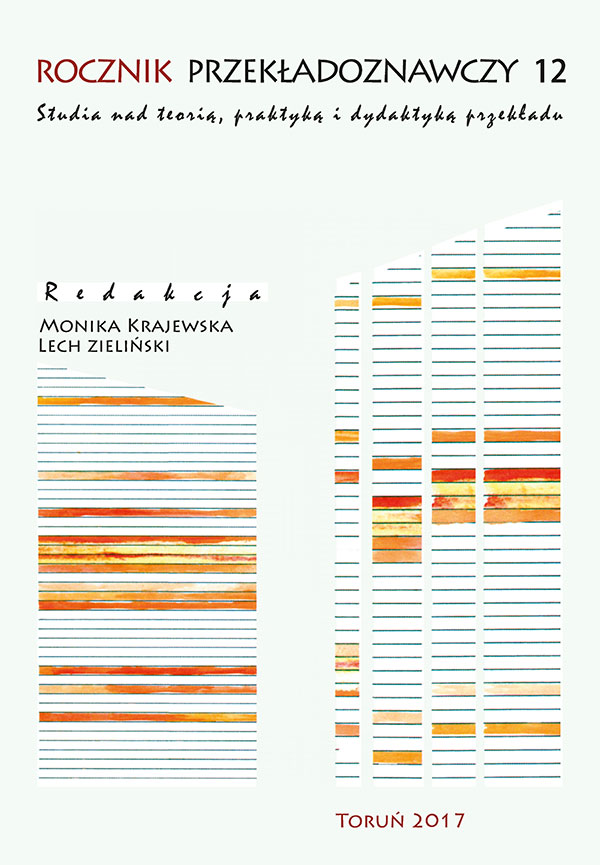The sworn translator examination versus the reality of professional practice: a critical voice in connection with the verification of sworn translator candidates’ competences
DOI:
https://doi.org/10.12775/RP.2017.002Keywords
sworn translator, translation examination, interpreting examination, competences of sworn translators, professional realism, marking criteriaAbstract
The paper attempts to critically evaluate the sworn translator examination in the light of the reality of professional practice. The analysis will cover the following components: assessment criteria, including the relatively low rating of the information transfer criterion and lack of the critical (fatal) error criterion, prohibition to use reference materials (encyclopaedic dictionaries, legislation) and a limited possibility to use dictionaries, lack of access to the Internet, and the need to hand-write the examination. These elements will be correlated with the EMT model of translation competencies and the realities of professional practice. The paper proposes eight postulates which can improve the translation part of the sworn translator examination by adjusting it to a greater degree to skills and competences required of sworn translators on the job. Finally, it is suggested to separate translation from interpreting certifications and to introduce specialisations.
References
Biel, Ł., 2011, „Professional Realism in the Legal Translation Classroom: Translation Competence and Translator Competence”, Meta. Translators’ Journal 56 (1), s. 162–178.
Biel, Ł., 2012, „Egzamin na tłumacza przysięgłego – zbiory testow egzaminacyjnych”, Comparative Legilinguistics. International Journal for Legal Communication 9/2012, s. 103–108.
Biel, Ł., 2014, Lost in the Eurofog: The Textual Fit of Translated Law, Frankfurt am Main.
Cieślik, B., 2014, Materiały pomocnicze na egzaminie na tłumacza przysięgłego, „Rocznik Przekładoznawczy. Studia nad teorią, praktyką i dydaktyką przekładu”, M. Krajewska, L. Zieliński (red.), nr 9, s. 89–99.
Cieślik, B., L. Laska, M. Rojewski (red.), 2010, Egzamin na tłumacza przysięgłego. Komentarz, teksty egzaminacyjne, dokumenty, Warszawa.
Dostatni, G., 2005, Komentarz do ustawy o zawodzie tłumacza przysięgłego, Warszawa.
Espinoza, J., 2015, „More than 300 different languages spoken in British schools, report says”, The Telegraph, 24.07.2015, http://www.telegraph.co.uk/education/educationnews/11761250/More-than-300-differentlanguages-spoken-in-British-schools-report-says.html (dostęp: 31 lipca 2015 r.).
Gambier, Y. (red.), 2009, „Competences for professional translators, experts in multilingual and multimedia communication”, http://ec.europa.eu/dgs/translation/programmes/emt/key_documents/emt_competences_translators_en.pdf (dostęp: 30 lipca 2015 r.).
Kierzkowska, D. (red.), 2011, Kodeks tłumacza przysięgłego z komentarzem, Warszawa.
Kubacki, A. D., 2012, Tłumaczenie poświadczone. Status, kształcenie, warsztat i odpowiedzialność tłumacza przysięgłego, Warszawa.
Kuźniak, M., 2013, Egzamin na tłumacza przysięgłego w praktyce. Język angielski. Analiza językowa, Warszawa.
Pym, A., 2015, „Translating as risk management”, Journal of Pragmatics 85, s. 67–80.
Rybińska, Z. (red.), 2011, Teksty egzaminacyjne dla kandydatów na tłumacza przysięgłego, Warszawa.
Scarpa, F., Orlando, D., 2017, „What it takes to do it right: an integrative EMT-based model for legal translation competence”, Journal of Specialised Translation 27, s. 21–42.
Downloads
Published
Issue
Section
Stats
Number of views and downloads: 811
Number of citations: 0



